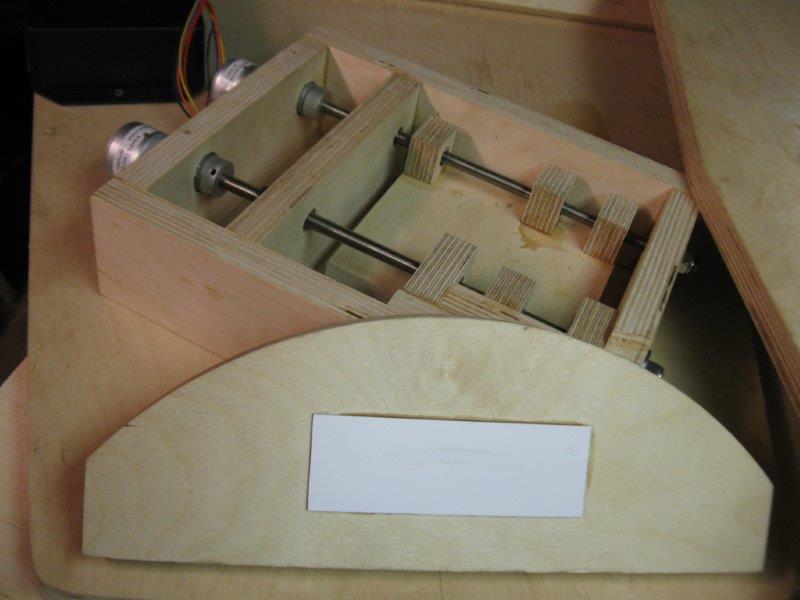Fine guidance

The 3d guiding actuator is one of the SkyStoppers major innovations. It allows proper guiding of AP anywhere in the sky, including near the horizon and the poles.
In addition to the standard up/down motion available on most dual axis equatorial platforms, the actuator can also do a lateral motion, rotating the entire telescope, including the telescope's ground board. This lateral motion provides the essential degree of freedom needed near the east or west horizon, and near the poles.
The actuator uses 2 stout geared stepper motors, with 1440 steps per rotation. The 5/16-24 threaded rod they turn allows 1440 steps to move 1/24 of an inch.
For a standard sized base on a telescope, the lever arm is about 16 inches, so the actuator has a precision of 0.149 degrees per turn. That equates to about 0.37 arcseconds per step.
Guiding can make very tiny adjustments to compensate for the refraction of the atmosphere during a timed exposure.
Also, the precision of the actuator is so good, that it can be used to help achieve proper north alignment. If the telescope is pointed southward and the actuator is used to track a star, in about a minute the number of required steps can be counted and a formula applied, to determine the azimuthal misalignment on north with arcminute precision. Likewise, pointing the telescope east and using the lateral actuator allows measurement of altitude misalignment on true North.
Since the SkyStopper has the required precision in both axes, it can get a precise alignment on North both in altitude and azimuth.
Supporting a third of the telescope's weight on a threaded rod is hard to do without bearings. Steel has a coefficient of friction of 25 percent. This becomes a force impeding rotation of the shaft, acting on the lever of the radius of the rod. and that can overwhelm a motor. In the SkyStopper actuator, there are bearings which ride the threaded rod and support the weight, and a brass nut which moves the actuator. The bearings are larger than the rod, so they have a little play. The play is elegantly taken up and the system improved with one clever twist, literally. The bearings are angled so that on their line of contact with the rod, they will have a rolling motion. THe angle is about 2.5 degrees.